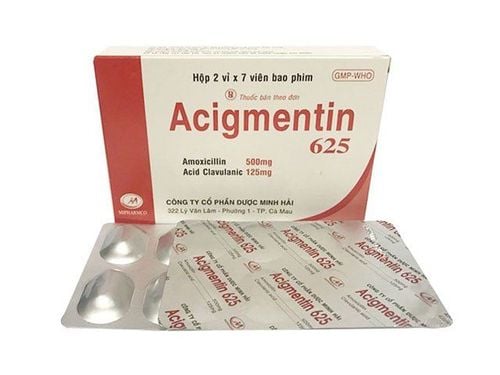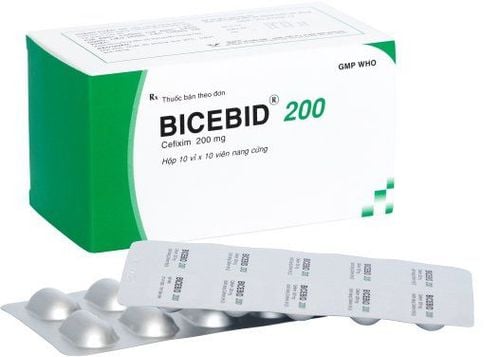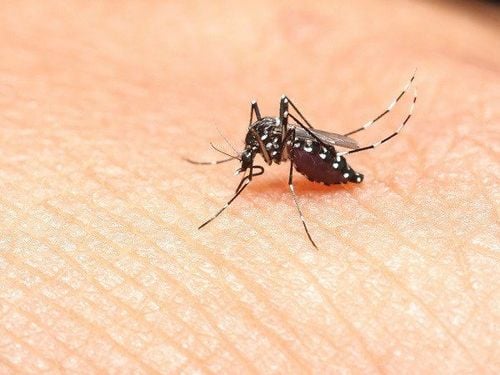This is an automatically translated article.
Posted by Doctor Nguyen Thi Tam - Pediatric Center - Vinmec Times City International General Hospital
Respiratory infections are common acute diseases in children. Children can have an average of four to six acute respiratory infections a year, including infections anywhere in the respiratory tract.
1. Causes of respiratory infections in children
Respiratory infections including infections anywhere in the respiratory tract:
Upper respiratory tract infections: nasopharyngitis, pharyngitis, acute tonsillitis, acute sinusitis, acute otitis media, laryngitis , windpipe.
Lower respiratory tract infections: croup, bronchiolitis, pneumonia.
Causes of respiratory infections in children are mainly caused by viruses with affinity for the respiratory tract:
Respiratory syncytial virus (RSV) ranks first, accounting for 50% of bronchiolitis
in children < 2 years old. The main respiratory syncytial viruses include: Adenovirus, influenza virus, influenza, measles, Rhinovirus...
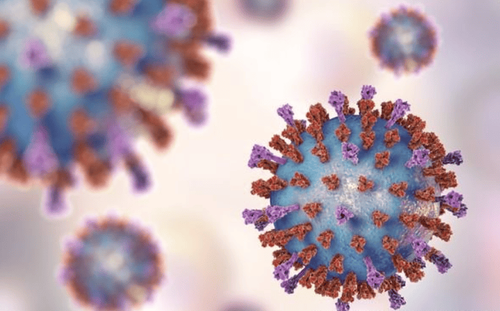
Virus hợp bào RSV là nguyên nhân hàng đầu gây tình trạng nhiễm khuẩn hô hấp ở trẻ em
RSV is easily transmitted and easily develops into an epidemic, children with short and weak viral immunity are susceptible to re-infection.
Bacteria causing respiratory infections: Haemophilus influenzae, pneumococcus, Moraxella.catarrhalis, staphylococcus, streptococcus...
Non-specific bacteria such as Mycoplasma pneumoniae account for 20-30% of respiratory infections in children , can account for 40% in children > 5 years old.
2. Favorable conditions for children's acute respiratory infection
Premature babies, malnourished children, infants. Children < 2 months Children with congenital diseases Cold weather, changing seasons. Smoke, tobacco, respiratory allergens Animal hair Unhygienic environment
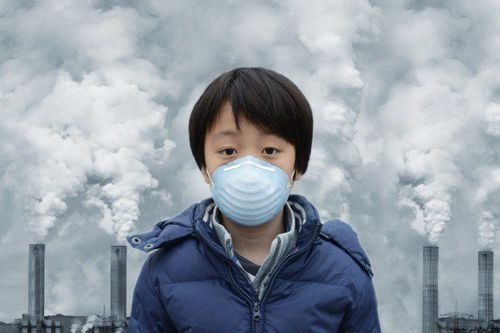
Tình trạng khói bụi khiến trẻ dễ nhiễm khuẩn hô hấp cấp
Cough: is a common symptom, dry cough, sputum cough, cough attack. Fever: mild, moderate or very high. Newborns may have hypothermia. Runny nose, sore throat, hoarseness, can resemble a cold. Shortness of breath, wheezing, wheezing, chest indrawing, rapid breathing. Ear discharge. The most dangerous signs are: Abortion, vomiting, convulsions, lethargy, slow or stopped breathing.
3. Evolution of acute respiratory infection
Acute respiratory infections in children caused by viruses usually have a positive prognosis, except for some severe cases such as acute laryngitis, adenovirus pneumonia in young children, which can be fatal. Most do not need antibiotics, except in cases of bacterial superinfection.
Bacterial respiratory infections : Most are dangerous and require antibiotics. Especially pneumonia caused by Staphylococcus aureus, epiglottitis caused by Haemophilus influenzae.
Pneumococcal pneumonia that is resistant to drugs, takes a long time to heal, or is combined with otitis media, some common antibiotics have no results. Pneumonia caused by Haemophilus influenzae is also often accompanied by nasopharyngitis, otitis media, conjunctivitis eye...
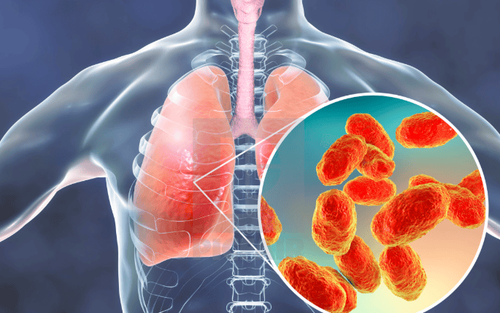
Haemophilus influenzae gây ra tình trạng viêm phổi ở trẻ
Upper respiratory tract infections:
Nasopharyngitis: if treatment does not help, it is easy to prolong acute otitis media, sinusitis. Nasopharyngitis is also the cause of the onset of asthma symptoms in patients with a predisposition to asthma. Nasopharyngitis can also cause acute croup, laryngitis, viral pneumonia. Pharyngitis - Purulent tonsils can cause soft tissue abscess around Amydal, sinusitis, otitis media, purulent meningitis. Pharyngitis caused by group (A) β-hemolytic streptococcus can cause acute glomerulonephritis, acute rheumatic fever, rheumatic heart disease...
Lower respiratory tract infection
Severe pneumonia if not treated and treated promptly, can stop breathing and lead to death. Acute respiratory infections progress from mild to severe very quickly. With proper diagnosis and prompt treatment, complete cure can be achieved. Improper and untimely treatment will affect the health of the child,

Trẻ có dấu hiệu viêm phổi cần được chẩn đoán và điều trị sớm
4. Measures to prevent acute respiratory infections in children
Young children have poor resistance, their immune systems are not fully developed and are not yet complete, so they are susceptible to diseases. Therefore, it is necessary to:
Isolate the child from the source of the disease. Drop the nose, wash the nose with warm 0.9% NaCl. Clear airway in case of upper respiratory tract infection. Older children give warm salt water, drink plenty of water. Avoid humid environment, smoke, dust, tobacco... Fully vaccinate children against influenza, measles, whooping cough, pneumococcal, Haemophilus influenza...
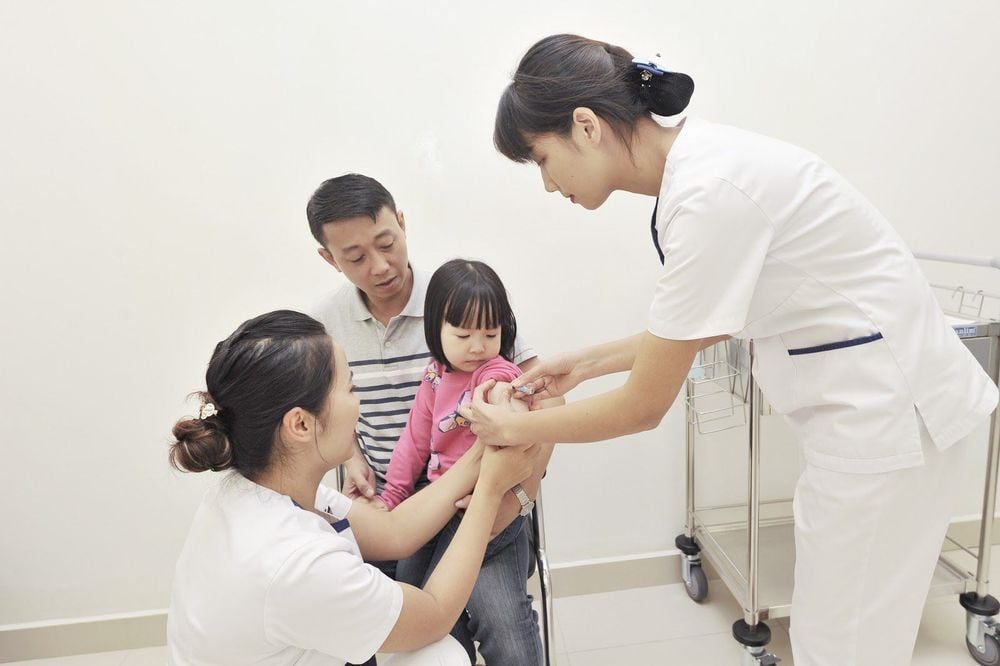
Tiêm phòng vắc-xin là một trong các biện pháp phòng nhiễm khuẩn hô hấp cấp trẻ
As soon as the child shows signs of respiratory infection, parents should take the child to medical facilities for timely diagnosis and treatment. To register for examination and treatment at Vinmec International General Hospital, you can contact the nationwide Vinmec Health System Hotline, or register online HERE.





